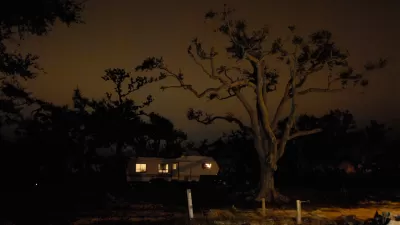When Andres Duany planned the village of Cornell, he built in walkability, density, and mixed-use. The outcome, however, falls short of the New Urbanist vision; driving is the norm and retail is scarce. What happened?
"It was with higher density in mind that the provincial government - which in the early '90s owned the land - approached Mr. Duany and his firm, Duany Plater-Zyberk, to develop Cornell on what was then greenfield.
Mr. Duany and his team got to work, preparing what he said was 'one of the best models' he had created. But a change of provincial government and a hand-off to a private firm called Law Development Group meant a change of plans and, while the blueprint had been completed, it was just shy of being coded into law. That form-based code would have ensured that everything from the segregation of land use to architectural aesthetics to the gridding of the streets would be carried out as planned.
'The tragic historical circumstance of the development changing hands is what has led Cornell to become what it has,' Mr. Duany said, adding that he did not have access to Law Development and, since being in a sense nudged off the project, has not been back to Cornell in more than five years. 'Most New Urbanism is done as a matter of law. In this instance, it's been a matter of persuasion.'"
FULL STORY: In Markham, the dream of an urban village that never was

Americans May Be Stuck — But Why?
Americans are moving a lot less than they once did, and that is a problem. While Yoni Applebaum, in his highly-publicized article Stuck, gets the reasons badly wrong, it's still important to ask: why are we moving so much less than before?

Using Old Oil and Gas Wells for Green Energy Storage
Penn State researchers have found that repurposing abandoned oil and gas wells for geothermal-assisted compressed-air energy storage can boost efficiency, reduce environmental risks, and support clean energy and job transitions.

Placekeeping: Setting a New Precedent for City Planners
How a preservation-based approach to redevelopment and urban design can prevent displacement and honor legacy communities.

San Francisco’s Muni Ridership Grew in 2024
The system saw its highest ridership since before the Covid-19 pandemic, but faces a severe budget shortage in the coming year.

Colorado Lawmakers Move to Protect BRT Funding
In the face of potential federal funding cuts, CDOT leaders reasserted their commitment to planned bus rapid transit projects.

Safe Streets Funding in Jeopardy
The Trump administration is specifically targeting bike infrastructure and other road safety projects in its funding cuts.
Urban Design for Planners 1: Software Tools
This six-course series explores essential urban design concepts using open source software and equips planners with the tools they need to participate fully in the urban design process.
Planning for Universal Design
Learn the tools for implementing Universal Design in planning regulations.
Heyer Gruel & Associates PA
City of Moreno Valley
Institute for Housing and Urban Development Studies (IHS)
City of Grandview
Harvard GSD Executive Education
Salt Lake City
NYU Wagner Graduate School of Public Service
City of Cambridge, Maryland




























